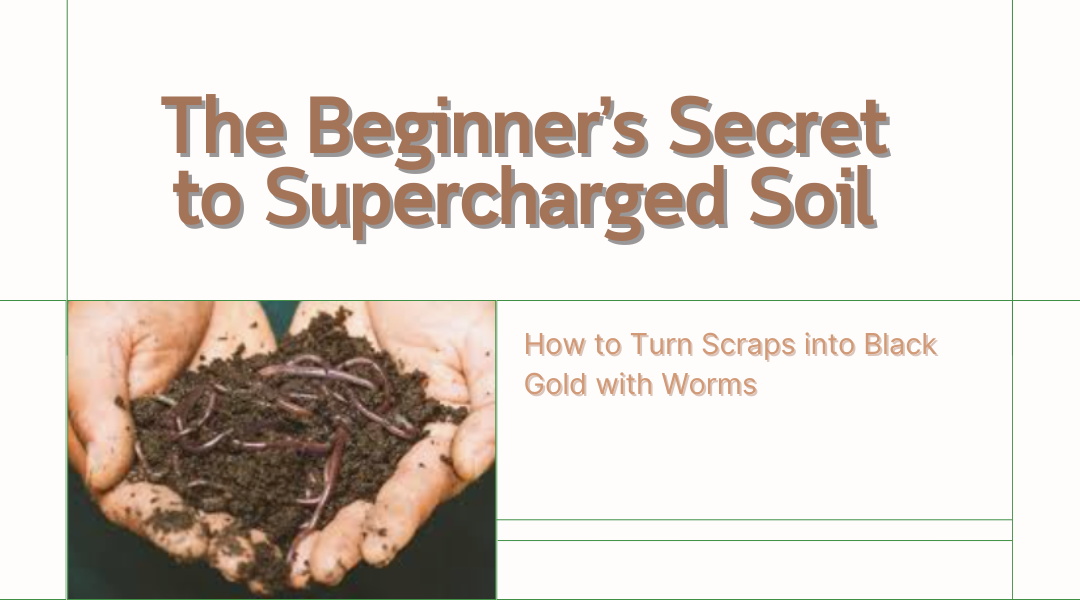Worms aren’t exactly the most glamorous garden helpers. But if you’ve ever struggled with lackluster soil, stubborn plants, or guilt over tossing food scraps, these little wigglers might just become your new best friends. Worm farming (or vermicomposting, if you want to get fancy) is the ultimate hack for transforming kitchen waste into nutrient-packed fertilizer, and the best part? It’s dirt-cheap, nearly effortless, and works whether you’ve got a sprawling garden or a studio apartment.
Why Worms? (And No, Not Just Any Worms)
Forget the earthworms you dig up in the backyard. Composting worms—like red wigglers or tiger worms—are the real MVPs. They’re ravenous eaters, devouring half their body weight in scraps daily while producing castings (a.k.a. worm poop), which is basically liquid gold for plants. Unlike synthetic fertilizers, worm castings:
- Feed soil microbes (the unsung heroes of plant health)
- Retain moisture (so you water less)
- Prevent disease (thanks to natural enzymes)
- Smell like fresh earth (no chemical stench)
And if that’s not enough, you can brew worm tea—a nutrient-rich soak that gives plants an instant boost.
Setting Up Your Worm Bin: Easier Than You Think
You don’t need a fancy setup. A plastic tote with holes drilled in the sides (for airflow) works perfectly. Here’s the gist:
- Bedding: Shredded newspaper, cardboard, or coconut coir (worms love burrowing in it).
- Location: Somewhere shady—under the sink, in a garage, or on a covered porch (worms hate baking in the sun).
- The Worms Themselves: Order red wigglers online or from a local compost nerd (don’t raid your garden—wrong type!).
Pro Tip: Start slow with feeding. A handful of scraps every few days is plenty until the colony grows.
What to Feed Them (And What to Avoid)
Worms are picky eaters. They’ll happily munch on:
✔ Fruit & veggie peels (banana skins = worm candy)
✔ Coffee grounds & loose-leaf tea
✔ Crushed eggshells (balances pH)
But never give them:
✖ Meat, dairy, or oily foods (smelly disaster)
✖ Citrus or onion (too acidic)
✖ Pet waste (just… no)
Harvesting the Good Stuff
After a few months, your bin will be full of dark, crumbly castings. To separate worms from their treasure:
- The “Move Over” Trick: Push all the compost to one side, add fresh bedding and food to the other. The worms will migrate, leaving you free to scoop out the finished castings.
- The “Sift & Shake” Method: Dump the contents onto a mesh screen. The castings fall through; the worms stay put.
Use the castings to top-dress houseplants, mix into potting soil, or brew into worm tea.
Why Bother? (Spoiler: It’s a Game-Changer)
- Zero waste: Diverts kitchen scraps from landfills.
- Free fertilizer: No more buying expensive, chemical-laden plant food.
- Better veggies: Healthier soil = tastier tomatoes, bushier herbs, happier plants.
Final Thought: Just Try It
Worm farming isn’t some crunchy-granola trend—it’s a legit shortcut to lush, thriving plants with almost no effort. Start small (a handful of worms in a shoebox-sized bin), feed them your apple cores and coffee filters, and watch your garden (and your green thumb) level up.
And hey, if anyone scoffs at your “worm obsession,” just smile and hand them a bag of black gold. They’ll understand soon enough.
